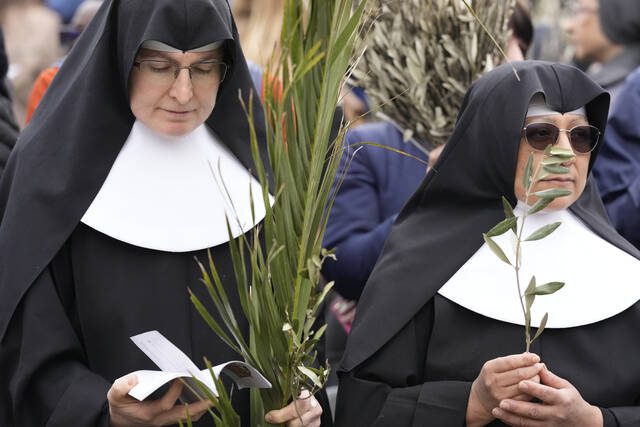Palm Sunday is a day that commemorates Jesus entering Jerusalem and being welcomed by crowds waving palm branches. It is a Christian holiday that is celebrated every year.
This year, Palm Sunday is on March 24. It is also called Passion Sunday and marks the beginning of Holy Week, the most sacred week for Christians, which includes Good Friday and Easter.
Here's a brief look at why Palm Sunday is important.
Is there a donkey in this story?
Yes.
The four Gospel writers in the Bible describe Jesus' procession into Jerusalem.
The Gospels differ, but an expert says they all agree that Jesus rode into Jerusalem on a donkey or a colt, sparking a debate about which animal it was.
A colt is a young male horse, but in the Bible, it is mainly used to refer to young donkeys, according to Joanne M. Pierce, a professor emerita of religious studies at the College of the Holy Cross.
According to Pierce, this references a passage from the Book of Zechariah in Jewish scriptures, which describes a victorious king entering Jerusalem on a donkey.
In Judaism, this passage refers to the Messiah, a spiritual king who would peacefully redeem Israel, and the donkey symbolizes humility.
“In Christianity, this animal almost becomes a symbol of Christ himself, showing patience and bearing others’ burdens, unlike horses, which are associated with royalty, power, and war,” Pierce writes.
What about the palms?
In the biblical Palm Sunday story, a cheering crowd greeted Jesus as he walked along the road. Some laid their garments on the ground, while others threw down leafy branches they had cut from the fields. In the Gospel of John, these branches are palms, representing victory and triumph.
In the Gospel of Matthew, people shouted: “Hosanna to the son of David! Blessed is the one who comes in the name of the Lord! Hosanna in the highest heaven!” Hosanna was an expression of adoration and a plea for salvation.
After the procession, Jesus went into the temple, according to the Bible.
How is palm sunday celebrated?
The ritual usually begins with clergy blessing the palms, followed by a reading of the Passion of Christ, which details the final events of Jesus’ life.
In German-speaking countries, some ceremonies used to feature a figure of Jesus riding a donkey, called a “ Palmesel.” Worshippers would lay palms on the ground before the Palmesel during vibrant processions.
Christian pilgrims in the Holy Land celebrate Palm Sunday by holding Masses and processions retracing Jesus’ triumphant entry. They carry palm fronds and olive branches from the top of the neighboring Mount of Olives to Jerusalem’s historic Old City, which is home to sacred sites of the three Abrahamic monotheistic faiths.
In churches all over the world, people often take the palm branches home and some of them will be used to make ashes.
How are the palm branches turned into ashes?
You can buy ashes, but some churches prefer to make their own by burning the palm branches from previous years.
The ashes are used for Ash Wednesday, a solemn day of fasting and reflection that marks the beginning of the most penitent season in Christianity.



